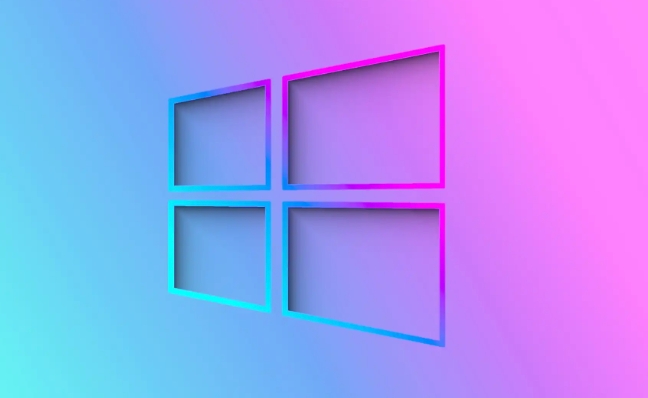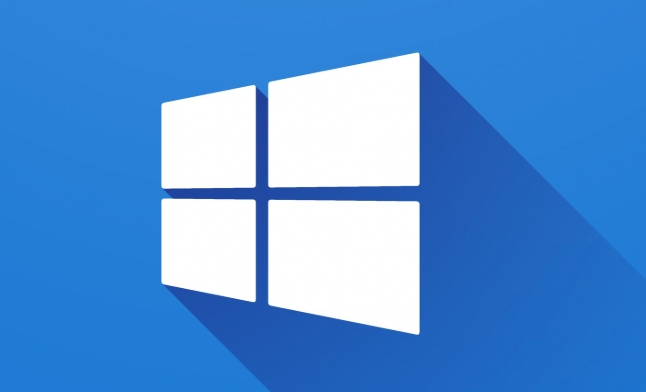Windows can't access shared folder on network
Jun 30, 2025 pm 04:56 PMWhen encountering the "Windows can't access shared folder on network", you can usually solve the following steps: 1. Turn on the network discovery and file sharing function and turn off password protection; 2. Make sure that the target computer is enabled to share and set the correct permissions; 3. Check the firewall rules and service status to ensure that it allows shared access; 4. Use the credential manager to add network credentials for long-term stable connection.

The problem of "Windows can't access shared folder on network" is usually caused by abnormal network settings, permission configuration, or service status. Don't worry, this situation is actually quite common, and most of the time it can be solved with a few small adjustments.

Below are some common reasons and corresponding troubleshooting methods to help you solve this problem step by step.

1. Check whether network discovery and file sharing are enabled
Windows may turn off network discovery and file sharing by default, which will prevent you from accessing shared folders on your LAN.
Operation steps:

- Open Control Panel → Network and Internet → Network and Sharing Center
- Click "Change Advanced Sharing Settings" on the left
- Under the currently used network configuration file (usually "dedicated" or "public"):
- Enable Network Discovery
- Enable File and Printer Sharing
- Turn off "Password Protection Sharing" (if the other device does not set a user password)
Note: If you are connected to a company or public network, the system may use the "public" configuration file by default. Remember to check the settings in that section.
2. Make sure the target computer allows remote access
The computer you want to access also needs to be configured correctly, otherwise it will not be able to connect even if the unit is set up without any problem.
The following points need to be confirmed:
- The target computer has enabled file sharing and has set a shared folder
- The permissions to share folders include your username or Everyone user group
- If password protection sharing is enabled, make sure you know a valid username and password for the target computer
Tips: Try to run
ipconfigon the target computer to view the IP address, and then access it from the machine using the\\IP地址, such as\\192.168.1.100, which can bypass the problem of host name resolution.
3. Check whether the firewall and service block access
Sometimes firewall rules or some system services are not started, it can also cause shared folders to be inaccessible.
Recommended operations:
- Confirm that the firewall rules related to "File and Printer Sharing" are enabled
- Check if the following services are running:
- Function Discovery Resource Publication
- SSDP Discovery
- UPnP Device Host
- Computer Browser
- Server (this is especially important)
You can press Win R, enter services.msc to enter, find these services and set to "automatic" startup type, and start them manually if necessary.
4. Use Credential Manager to add network credentials (suitable for long-term use)
If you frequently access a shared directory and it enables password protection, you can avoid entering your account password every time by adding network credentials.
The steps are as follows:
- Open Control Panel → User Account → Credential Manager
- Click "Add Windows Credentials"
- Fill in the network address
\\目標(biāo)IP地址or target computer name - Enter the valid username and password of the target computer to save it
This way, the next time you access the shared folder, there will be no error prompt popup.
Basically these common treatments. Some settings seem simple but are easy to ignore, especially the default policies vary slightly between different Windows versions, such as the Home and Professional versions, which are somewhat different in network sharing. Don’t panic when encountering problems. Follow these steps to check them one by one, and most of the situations can be solved.
The above is the detailed content of Windows can't access shared folder on network. For more information, please follow other related articles on the PHP Chinese website!

Hot AI Tools

Undress AI Tool
Undress images for free

Undresser.AI Undress
AI-powered app for creating realistic nude photos

AI Clothes Remover
Online AI tool for removing clothes from photos.

Clothoff.io
AI clothes remover

Video Face Swap
Swap faces in any video effortlessly with our completely free AI face swap tool!

Hot Article

Hot Tools

Notepad++7.3.1
Easy-to-use and free code editor

SublimeText3 Chinese version
Chinese version, very easy to use

Zend Studio 13.0.1
Powerful PHP integrated development environment

Dreamweaver CS6
Visual web development tools

SublimeText3 Mac version
God-level code editing software (SublimeText3)

Hot Topics
 How to Set Up a Dual Monitor Display on Windows
Jul 27, 2025 am 04:16 AM
How to Set Up a Dual Monitor Display on Windows
Jul 27, 2025 am 04:16 AM
TosetupdualmonitorsonWindows,firstcheckhardwarecompatibilitybyensuringyourGPUhasmultiplevideoportsandyouhavethecorrectcables;connectthesecondmonitor,poweronbothdisplays,andletWindowsdetectthemautomatically;thenopenDisplaysettings,identifyandarrangeth
 How to install Composer on Windows?
Jul 25, 2025 am 01:28 AM
How to install Composer on Windows?
Jul 25, 2025 am 01:28 AM
CheckPHPinstallationbyrunningphp-vinCommandPromptandensurePHPisinPATH.2.DownloadtheComposer-Setup.exeinstallerfromgetcomposer.org,runit,followthewizard,andallowsystem-wideinstallation.3.Verifyinstallationbyrunningcomposer--versioninanewCommandPromptt
 What is a blockchain fork? How to understand and deal with blockchain network forks?
Jul 24, 2025 pm 09:57 PM
What is a blockchain fork? How to understand and deal with blockchain network forks?
Jul 24, 2025 pm 09:57 PM
Blockchain forks are the natural result of network upgrades and community differences. 1. Soft forks are mild upgrades that are forward compatible, and old nodes can still verify new blocks; 2. Hard forks lead to permanent chain splits, and all nodes must be upgraded otherwise they will remain in the original chain; 3. The reasons for forks mainly include technological upgrades, community concept differences and unexpected network problems; 4. User response strategies are to pay attention to official information, understand asset mapping rules, beware of fraud risks, and suspend operations during forks to ensure asset security and correctly handle new and old chain assets. Ultimately, understanding forks will help to deeply grasp the decentralized evolutionary nature of web3.
 How to create a bootable USB drive for Windows?
Jul 26, 2025 am 07:57 AM
How to create a bootable USB drive for Windows?
Jul 26, 2025 am 07:57 AM
To create a bootable Windows USB drive, you need to select the right tools and mirror files and follow the steps. 1. Prepare 8GB or more USB drives, networked computers, official ISO files and production tools such as MediaCreationTool or Rufus; 2. Use MediaCreationTool to quickly create the latest system installation disk. It takes about 10 to 20 minutes to write to the USB drive after selecting the corresponding language and version; 3. Rufus provides more customization options, supports loading any ISO files and selecting partition plans; 4. After the production is completed, you need to enter the BIOS/UEFI setting to turn off SecureBoot, adjust the startup sequence, and confirm the startup using the USB drive; the parameters need to be carefully selected throughout the process to ensure installation
 How to fix 'There are currently no power options available'
Jul 27, 2025 am 01:22 AM
How to fix 'There are currently no power options available'
Jul 27, 2025 am 01:22 AM
First run the power troubleshooter, then use the administrator command prompt to execute the powercfg-restoredefaultschemes command to reset the power scheme, then update or reinstall the ACPI driver, check the Group Policy settings (Pro/Enterprise Edition only), run sfc/scannow to repair the system files, and determine whether it is a user profile problem by creating a new user account. In most cases, the power options will return to normal.
 Windows night light not working
Jul 29, 2025 am 05:34 AM
Windows night light not working
Jul 29, 2025 am 05:34 AM
Night mode cannot adjust the color temperature or does not take effect, which is usually caused by system settings or driving problems. First check whether night mode is actually enabled: go to Settings > System > Display, confirm that the "Night Mode" switch is on. If the gray is not selected, it may be a problem with the graphics card driver or system version; secondly, if the color temperature adjustment is invalid, you can try restarting the Explorer, use the registry to repair, reset the night mode settings, and turn off the conflicting third-party software; finally check the time and geographic location permissions: Ensure that the location is allowed in the privacy settings, and enable the automatic time and time zone setting function.
 How to install Windows on a RAID array
Jul 25, 2025 am 01:46 AM
How to install Windows on a RAID array
Jul 25, 2025 am 01:46 AM
The key to installing Windows to RAID arrays is to correctly prepare the driver and set up BIOS/RAID. 1. Download and prepare the corresponding model of RAID controller driver in advance to ensure that it matches the Windows version and system bit count; 2. Set SATA mode to RAID in BIOS and create an array through the RAID tool to ensure that the status is normal; 3. Import the RAID driver through the "Load Drive" function during the installation process, so that the installer can identify the array; 4. After installation, the motherboard chipset driver needs to be installed, check the array status regularly, and use manufacturer tools to monitor performance to avoid replacing the hard disk at will. Do these steps and the RAID installation will be completed smoothly.
 How to install VSCode on Windows
Jul 27, 2025 am 03:16 AM
How to install VSCode on Windows
Jul 27, 2025 am 03:16 AM
Gotohttps://code.visualstudio.comanddownloadtheWindowsUserInstaller.2.Runthe.exefile,allowchanges,andselectrecommendedoptionsincludingaddingtoPATHandcreatingadesktopshortcut.3.ClickFinishtolaunchVSCodeafterinstallation.4.Optionallyinstallusefulextens






